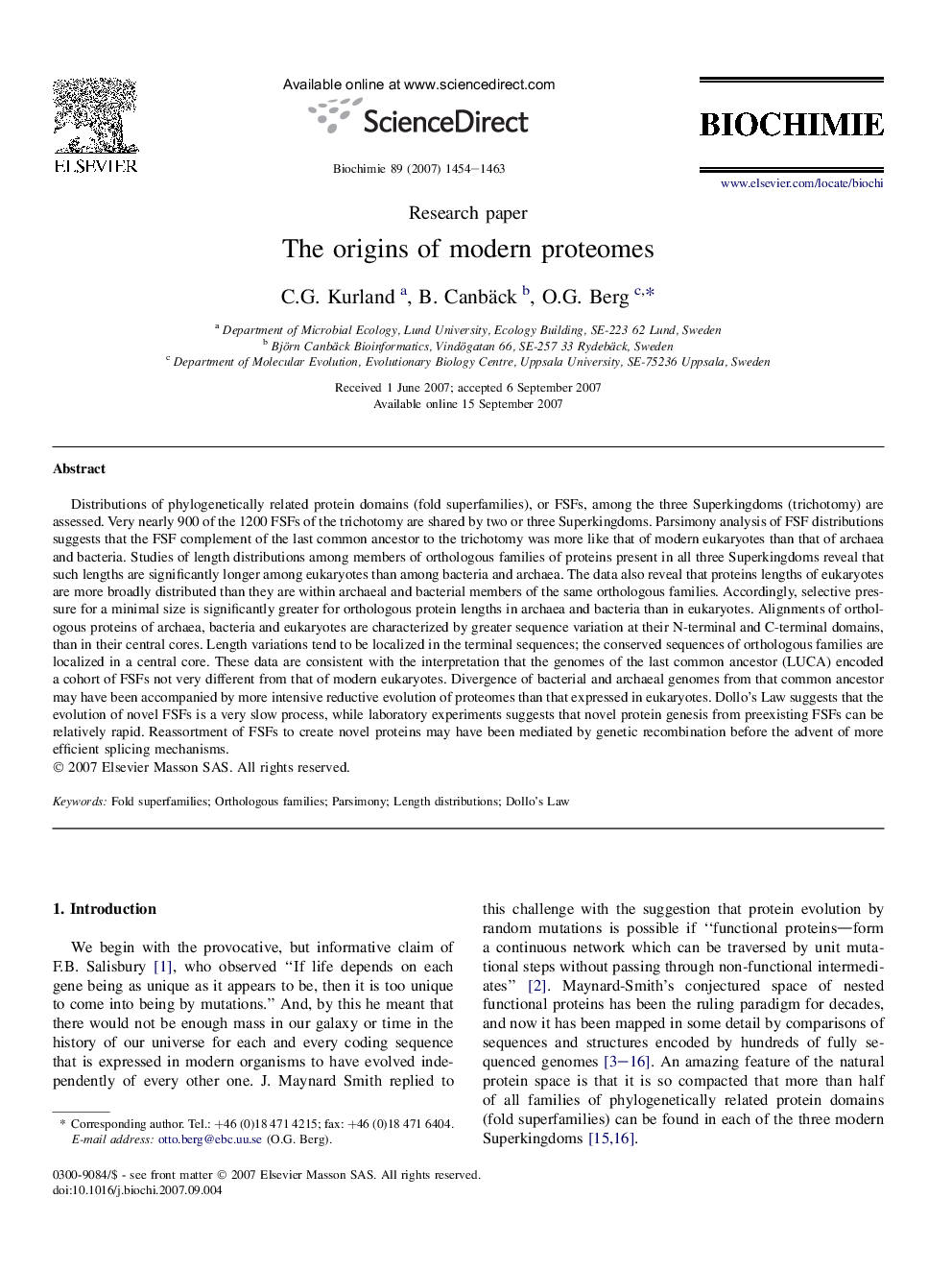| کد مقاله | کد نشریه | سال انتشار | مقاله انگلیسی | نسخه تمام متن |
|---|---|---|---|---|
| 1953285 | 1057262 | 2007 | 10 صفحه PDF | دانلود رایگان |

Distributions of phylogenetically related protein domains (fold superfamilies), or FSFs, among the three Superkingdoms (trichotomy) are assessed. Very nearly 900 of the 1200 FSFs of the trichotomy are shared by two or three Superkingdoms. Parsimony analysis of FSF distributions suggests that the FSF complement of the last common ancestor to the trichotomy was more like that of modern eukaryotes than that of archaea and bacteria. Studies of length distributions among members of orthologous families of proteins present in all three Superkingdoms reveal that such lengths are significantly longer among eukaryotes than among bacteria and archaea. The data also reveal that proteins lengths of eukaryotes are more broadly distributed than they are within archaeal and bacterial members of the same orthologous families. Accordingly, selective pressure for a minimal size is significantly greater for orthologous protein lengths in archaea and bacteria than in eukaryotes. Alignments of orthologous proteins of archaea, bacteria and eukaryotes are characterized by greater sequence variation at their N-terminal and C-terminal domains, than in their central cores. Length variations tend to be localized in the terminal sequences; the conserved sequences of orthologous families are localized in a central core. These data are consistent with the interpretation that the genomes of the last common ancestor (LUCA) encoded a cohort of FSFs not very different from that of modern eukaryotes. Divergence of bacterial and archaeal genomes from that common ancestor may have been accompanied by more intensive reductive evolution of proteomes than that expressed in eukaryotes. Dollo's Law suggests that the evolution of novel FSFs is a very slow process, while laboratory experiments suggests that novel protein genesis from preexisting FSFs can be relatively rapid. Reassortment of FSFs to create novel proteins may have been mediated by genetic recombination before the advent of more efficient splicing mechanisms.
Journal: Biochimie - Volume 89, Issue 12, December 2007, Pages 1454–1463